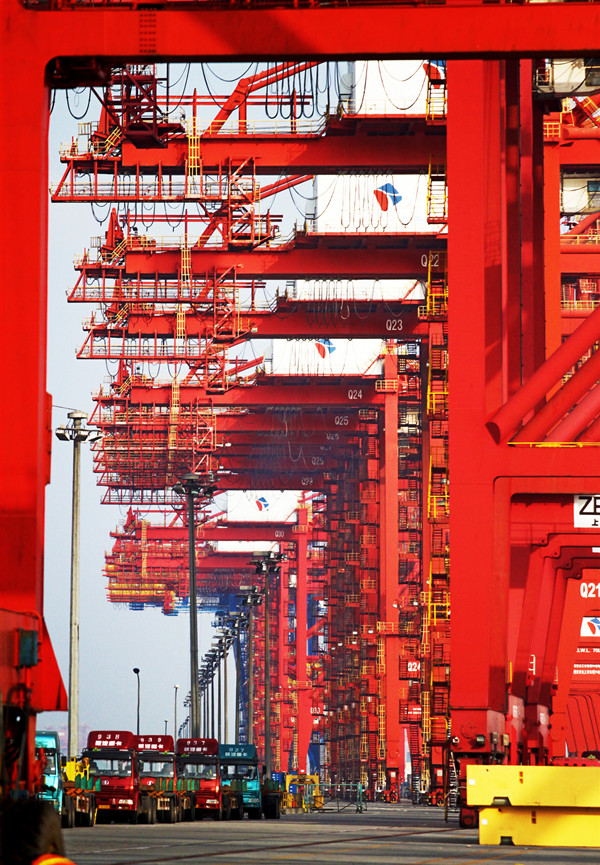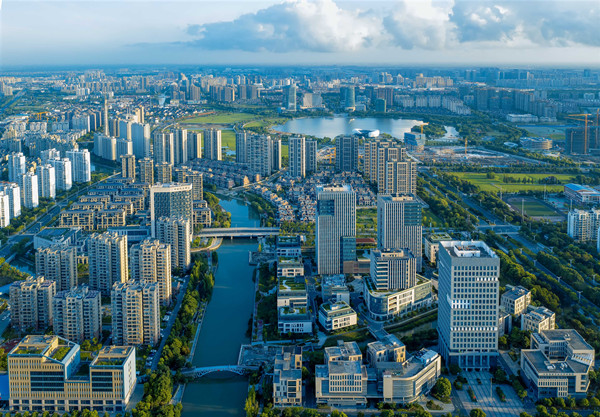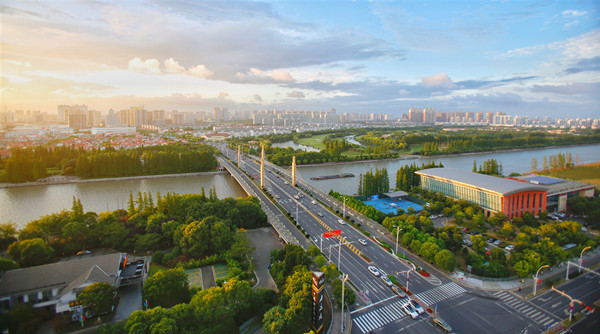Municipal ICH-Dragon and lion making crafts in Shuangfeng
Shuangfeng people are fond of dragon and lion dances, and the city has a long history of making props for these traditional dances.
Historical records show that this craft tradition dates back as far as the reign of Emperor Tongzhi of the Qing Dynasty. Zeng Guofan, the head of the Hunan army at that time, was said to be a fan. His troops often performed the dances for entertainment. When they won a battle, they would dance in celebration to the fanfare of gongs and drums from their barracks.
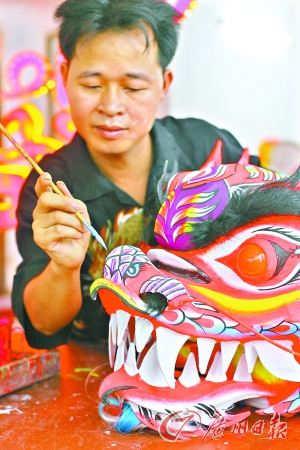
In 1864, Zeng led his troops to take Tianjing (today’s Nanjing), the capital of the Taiping Heavenly Kingdom (1851-1864). Many soldiers of his troops became stranded and left behind, so they settled in the vicinity. Later, their descendents spread along the valleys of the Yangtze River. Some of them settled down in Shuangfeng of Taicang, bringing with them the knowledge of dragon and lion dances and how to make props.
In the 1960s and 1970s, Xinhu Cultural Center (now Shuangfeng Cultural Center) did a thorough survey on dragon and lion dancing and the craft of making props. It collected and studied related materials, set up a township theatrical performance troupe and established a factory to make the props. The move significantly promoted the development of arts and crafts in the locality. In 2000, Shuangfeng was officially dubbed the “home of dragon and lion dances”. In 2008, it was once again appraised as a worthy bearer of the name.
Shuangfeng dragon and lion dances have been performed on many important occasions, including the founding ceremony of Taicang City, the Taicang spring and autumn trade fairs from 1991 to 1994, the 2nd Taicang Sports Meeting, the Groundbreaking Ceremony of Taicang Port, Taicang municipal government’s New Year’s greetings, and art festivals in Changshu, Jiading and Qingpu.
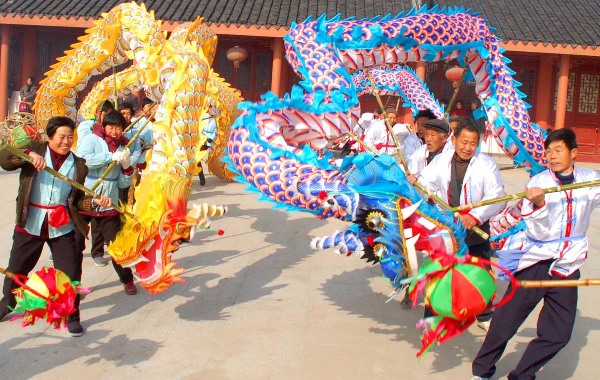
They were also presented at the opening ceremonies of some giant international companies, including Wanhong Group, Yina, Fischertechnik, Tidland, Mobil and KFC. In 1996, 1997 and 1998, Shuangfeng dragon and lion dances were covered by a variety of media, including China Central Television, Shanghai TV, Jiangsu TV, Suzhou TV, People’s Daily Overseas Edition, Xinmin Evening News, Xinhua Daily, Service Guide, Yangtze Evening News, Suzhou Daily and Taicang Daily.
Shuangfeng dragon and lion props are produced using new technology and materials as well as modern arts and crafts techniques. They are made to be lightweight but look impressive. They are inexpensive to make and can be produced in a short period of time.
The props sell well at home and abroad. Shuangfeng plants have produced stage props and garments for many TV and film crews as well as opera and acrobatics teams. Shuangfeng has also made properties for many large-scale provincial and national activities.
In 1992, dragon props for the Asian Games in Beijing were supplied by Shuangfeng Arts and Handicrafts Plant. Other major events using Shuangfeng-made stage props include the National Farmers’ Sports Meeting (Shanghai), the Provincial Sports Meeting of Jiangsu (Yixing) in 1996, the Zhejiang Provincial Silk Festival, the Anji Tea Festival, the Kunshan Art Festival, the Xinjiang Grape Festival, the return of Hong Kong from the British in 1997, the Shanghai Peach Festival and Shanghai International Art Festival in 1998.
In addition, Shuangfeng has furnished dragon and lion props for international performances, such as the Anhui Huangmei opera “Qin Xiang Lian” in the United States in 1996, the Nanjing Acrobatics Association’s performance in Japan in 1997, Yancheng Acrobatics Troupe’s performance in Singapore, and performances of Kaohsiung, China Taipei Soft Boxing Martial Art Association, Australia Yang’s Taiji Society and the All-Japan Sword Association.
Shuangfeng craftsmen created the logo of the Shanghai Machinery Expo (a Chinese lion) in Sweden as well as the dragon and lion props in the TV series “All Men are Brothers” and “Yang Warriors” in addition to the two golden dragons at the Spring Festival Get-together at the Chinese embassy in the United States in 1996.
In 2008, Shuangfeng produced a 2008-meter-long dragon costume to update Shanghai’s Guinness World Record. Other major records included two golden dragons for the 2008 Beijing Olympic Games, 300 lions for the 2008 Macao Asian Sports Meet’s opening ceremony, dragon and lion props used at the inaugural ceremony of President Obama in 2009, and the properties for the welcoming parties for former President Jiang Zemin and President Hu Jintao when they came to Yangzhou and Jixi for Spring Festival in 2009.
Shuangfeng dragon and lion properties have high cultural, artistic and economic values. Dragon and lion dances are important folk customs that add an auspicious air and a sense of joy to festivals and celebrations. Chinese people at home and abroad have preserved the tradition of performing dragon and lion dances. By selling dragon and lion props in domestic and overseas markets, Shuangfeng continues to contribute to the vitality of a venerable cultural institution.

